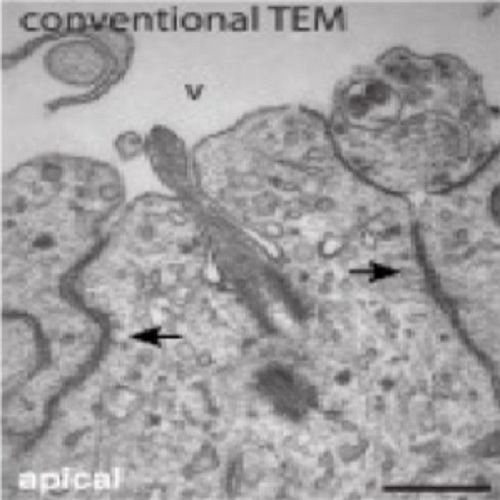Analysis of primary cilia in the developing mouse brain.
Stem and progenitor cells in the developing mammalian brain are highly polarized cells that carry a primary cilium protruding into the brain ventricles. Here, cilia detect signals present in the cerebrospinal fluid that fills the ventricles. Recently, striking observations have been made regarding the dynamics of primary cilia in mitosis and cilium reformation after cell division. In neural progenitors, primary cilia are not completely disassembled during cell division, and some ciliary membrane remnant can be inherited by one daughter cell that tends to maintain a progenitor fate. Furthermore, newborn differentiating cells grow a primary cilium on their basolateral plasma membrane, in spite of them possessing apical membrane and adherens junctions, and thus change the environment to which the primary cilium is exposed. These phenomena are proposed to be involved in cell fate determination and delamination of daughter cells in conjunction with the production of neurons. Here, we describe several methods that can be used to study the structure, localization, and dynamics of primary cilia in the developing mouse brain; these include time-lapse imaging of live mouse embryonic brain tissues, and analysis of primary cilia structure and localization using correlative light- and electron- and serial-block-face scanning electron microscopy.

- Methods Cell Biol. 2015 Feb 14;127:93-129
- 2015
- Developmental Biology
- 25837388
- PubMed
Enabled by:
